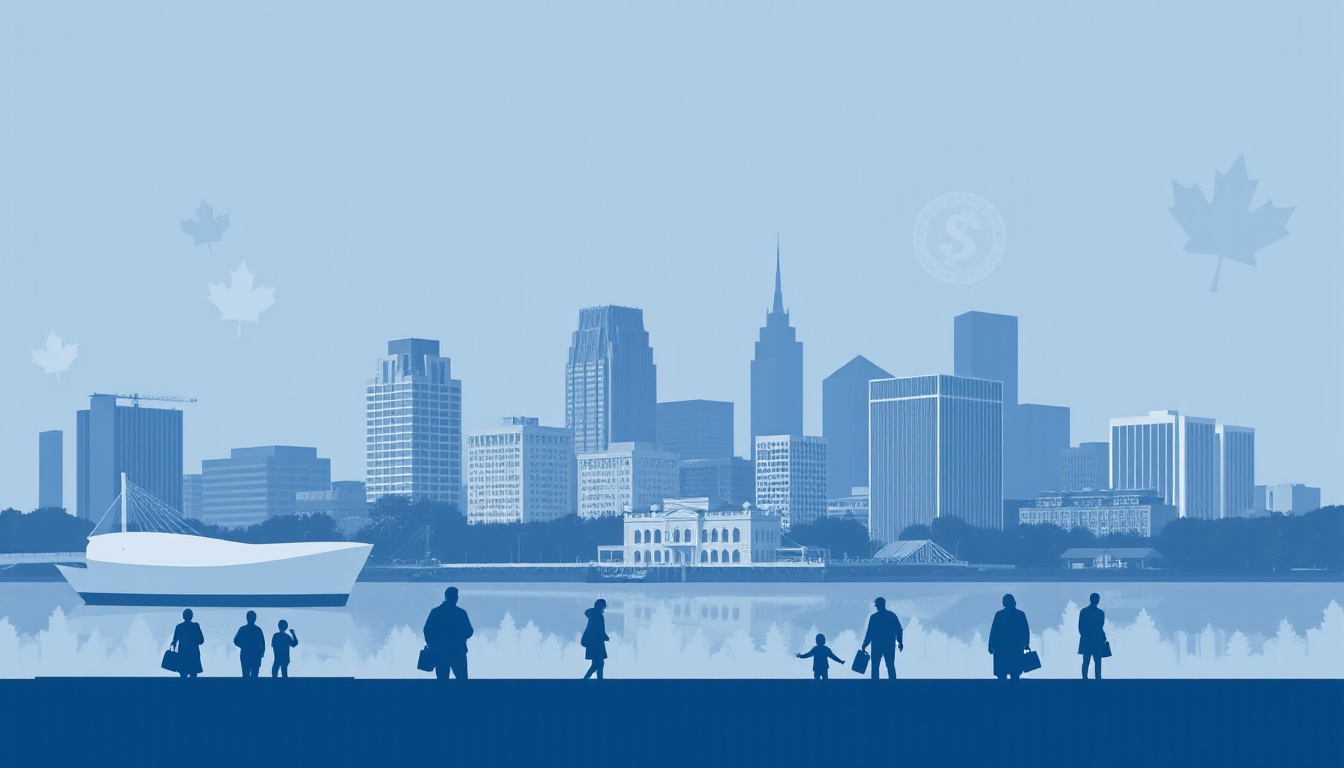As of 2023, the bankruptcy rate in Windsor, Ontario, stands at approximately
5.4 bankruptcies per 1,000 residents, representing a significant concern for both individual households and the local economy. Understanding bankruptcy rates in Windsor Ontario is crucial, especially considering the economic fluctuations and increasing living costs that have compounded financial stresses for many residents. The trends over the last decade reveal a steady increase in bankruptcy filings, influenced by factors such as rising consumer debt, unemployment rates, and economic downturns. Analyzing the implications of these bankruptcy rates sheds light on how they impact the local economy and community well-being, illustrating the need for effective debt relief solutions and economic support services.

Key Takeaways
- Bankruptcy rates in Windsor Ontario have shown significant fluctuations over the past decade.
- Economic downturns, unemployment, and personal debt levels are key factors contributing to local bankruptcy rates.
- The trend analysis indicates a correlation between economic conditions and bankruptcy filings in Windsor.
- Bankruptcy impacts not only individuals but also the overall health of the local economy and community support systems.
- Understanding these trends can help policymakers and stakeholders devise better support strategies for at-risk residents.
Overview of Bankruptcy Rates in Windsor Ontario
In 2023, the bankruptcy rates in Windsor, Ontario, reached approximately
0.06% of the total population, translating to about 1 in every 1,500 residents filing for personal bankruptcy. This statistic highlights the ongoing financial challenges faced by many in the region. Compared to the national average, which sits at around
0.04%, it’s evident that Windsor is experiencing a higher incidence of bankruptcies. According to the Office of the Superintendent of Bankruptcy Canada, economic factors such as rising living costs and reduced disposable income have contributed to this trend in Windsor. Understanding local bankruptcy rates is crucial for policymakers and financial advisors working to assist the community in overcoming financial hardships.
Factors Contributing to Bankruptcy in Windsor
As of 2023, the bankruptcy rates in Windsor, Ontario have reached approximately
9.2 bankruptcies per 1,000 residents, marking a significant trend in the region’s financial landscape. This statistic illustrates the growing economic struggles faced by individuals and businesses in Windsor, prompting a closer examination of the factors contributing to these increases. Key contributors include high unemployment rates, particularly in sectors affected by shifts in manufacturing, rising housing costs, and increasing consumer debt levels. According to a report from the Office of the Superintendent of Bankruptcy Canada, the financial stress faced by Windsor residents has been heavily influenced by the economic disruption caused by the COVID-19 pandemic, leading to a higher dependency on credit and loans. Furthermore, changes in local economic conditions, including a decline in job availability and stagnant wages, exacerbate the challenges for those in financial distress. Addressing these issues is crucial for local authorities aiming to support communities and reduce bankruptcy rates in Windsor. For further insights, the complete report can be accessed through Statistics Canada and comparable regional studies.
‘In the middle of every difficulty lies opportunity.’ – Albert Einstein

Trends Over the Last Decade
In the past decade, bankruptcy rates in Windsor, Ontario have fluctuated significantly, reflecting broader economic trends. As of 2023, the city reported a bankruptcy rate of approximately
3.25 per 1,000 residents, showcasing a slight decline from
3.5 per 1,000 in
2013. This downward trend mirrors national statistics, as Canada as a whole has seen a reduction in insolvency filings partly due to improved economic conditions and increased consumer awareness about managing debt. According to the Office of the Superintendent of Bankruptcy (OSB), Windsor’s rates still indicate a need for ongoing financial literacy initiatives as many residents continue to struggle with consumer debt. The implications of these statistics highlight the importance of local resources in providing financial relief and education to prevent future bankruptcies.
Impact of Bankruptcy on the Local Economy and Community
In 2023, Windsor, Ontario, experienced a notable increase in bankruptcy rates, with approximately 1 in every 200 residents filing for bankruptcy. This figure places Windsor’s bankruptcy rate at
0.5%, which is higher than the national average of
0.4% reported by the Office of the Superintendent of Bankruptcy Canada. The economic implications of these rising bankruptcy rates are significant, as increased financial distress among residents can lead to reduced consumer spending, a decline in local businesses, and higher unemployment rates. According to the Windsor-Essex Regional Chamber of Commerce, rising bankruptcy rates can strain local economies, potentially disrupting community services and affecting overall quality of life. This trend emphasizes the need for accessible debt relief solutions for residents in Windsor to mitigate these economic challenges.
